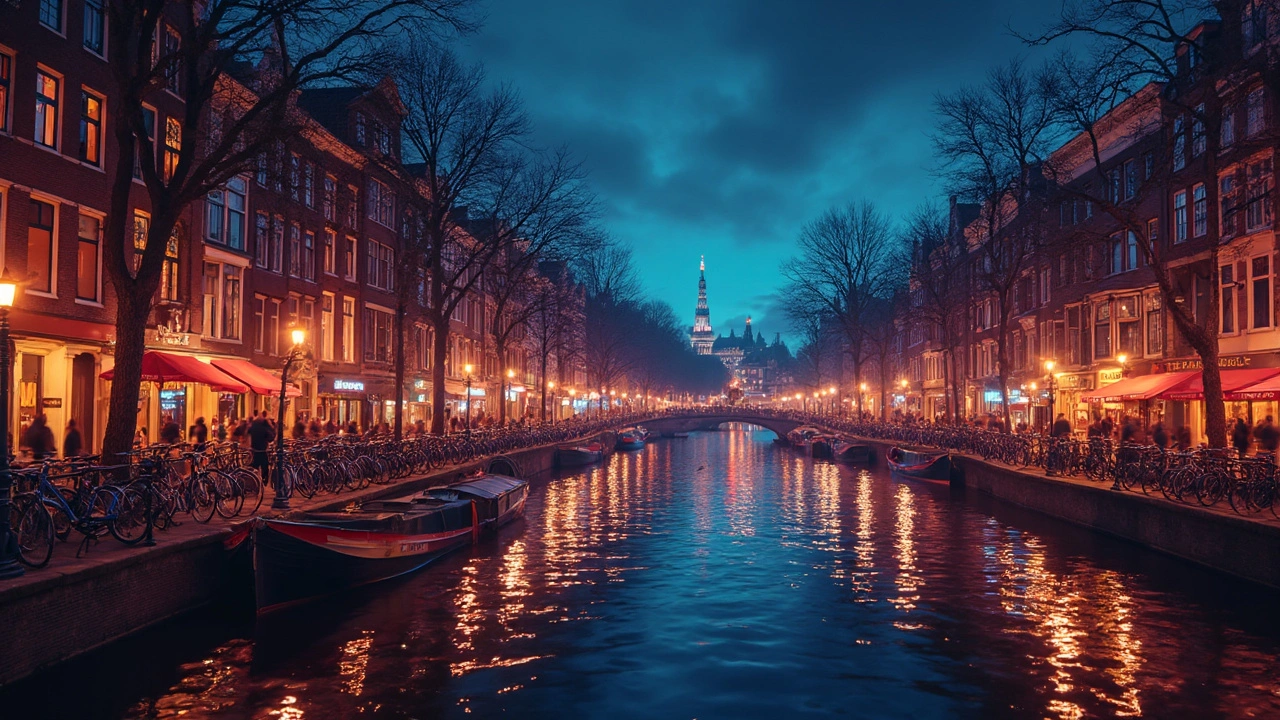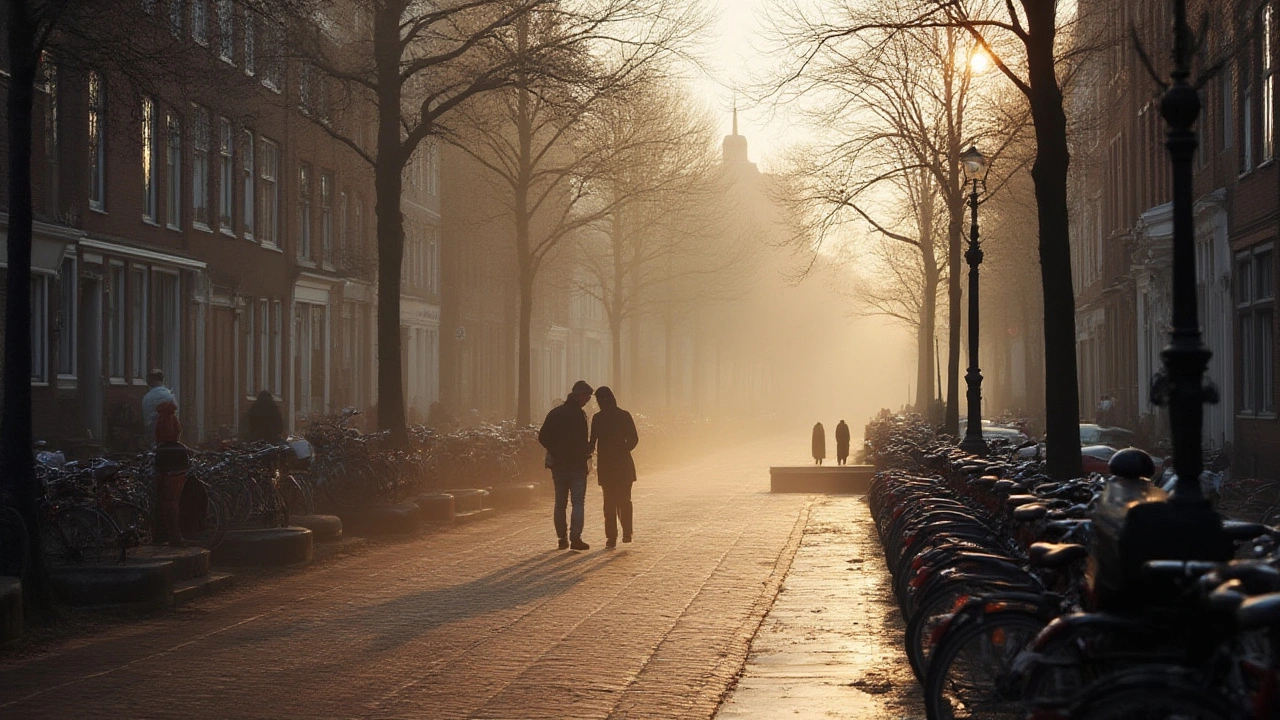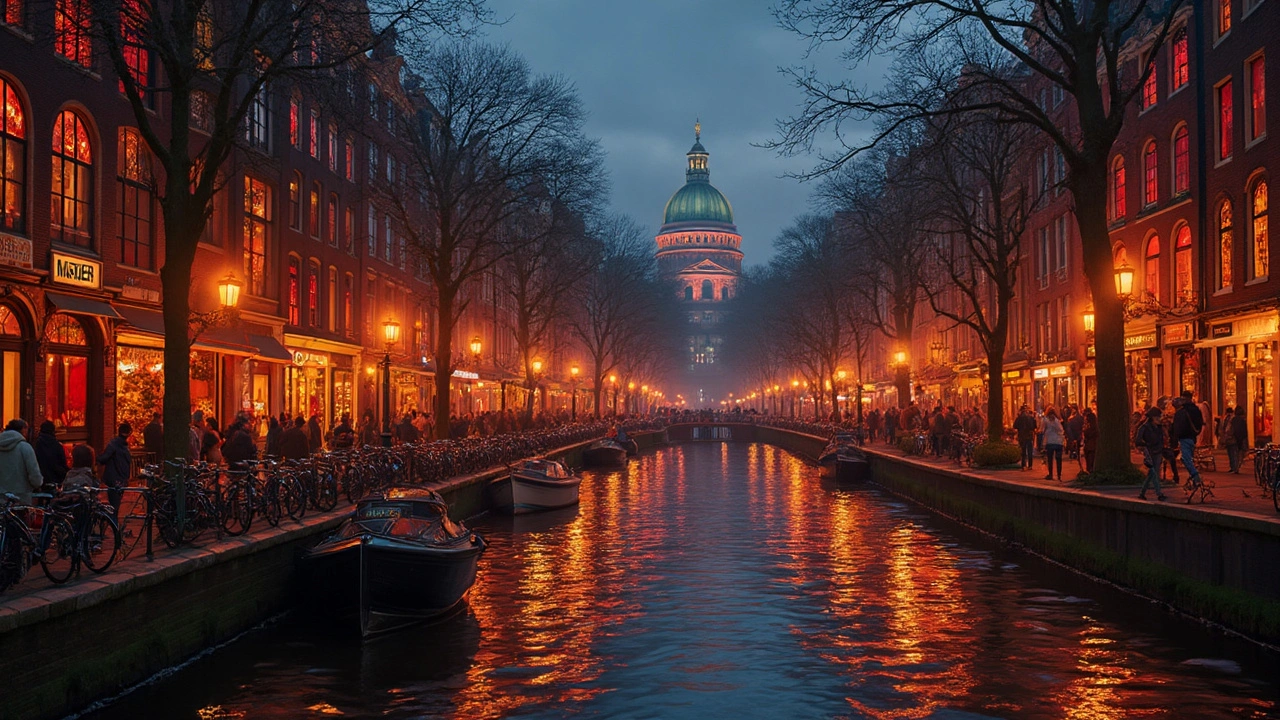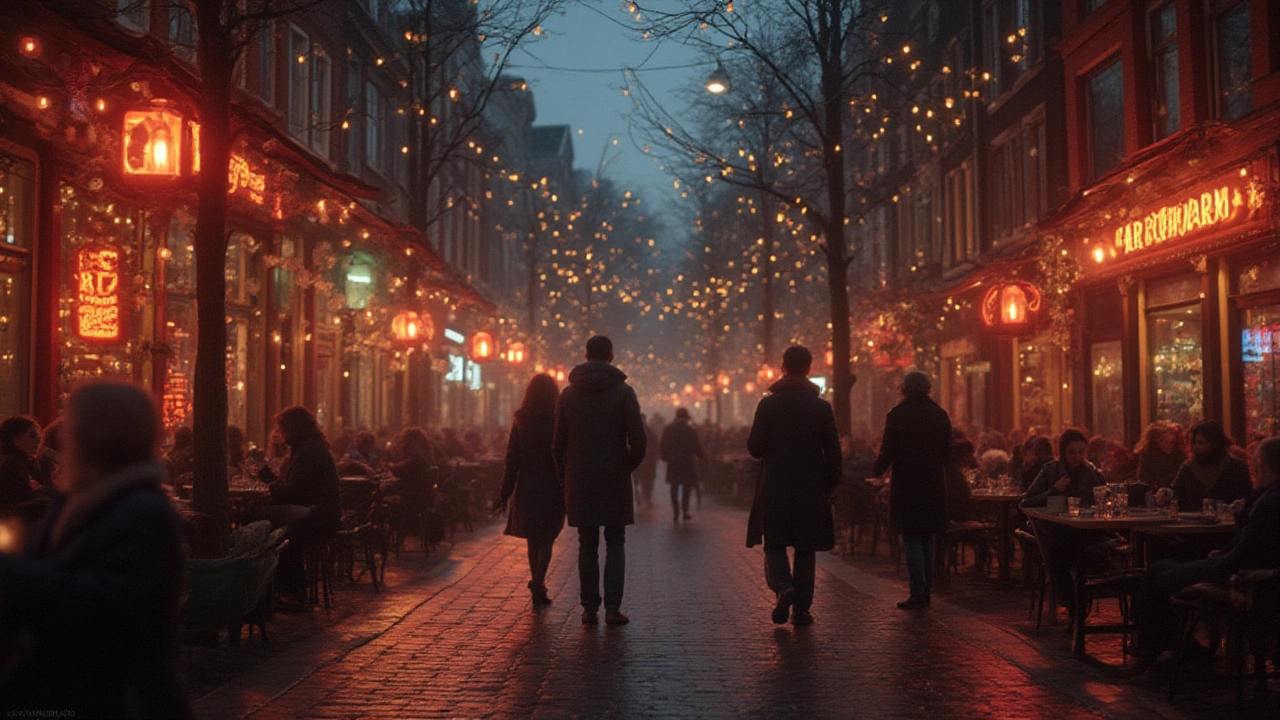
Walking through the glowing lanes of De Wallen, Amsterdam’s iconic Red Light District, is a sensory overload: neon lights, open windows, and the hum of curious travelers. For most visitors, the district feels like another world—one that seems to play by its own rules. Maybe you’ve wondered if those rules leave any room for negotiation when it comes to prices, or if haggling just makes you look out of place. You won’t find this advice plastered on travel sites or in popular guidebooks. But if you’re planning to experience this famous piece of Amsterdam nightlife, there’s a lot to know about how it all really works.
The Unspoken Rules of De Wallen: What Locals Really Think
Forget what you’ve seen in movies; the Red Light District in Amsterdam is a highly regulated business zone, not a Western bazaar. Sex workers here are licensed professionals, and the Dutch government has set up strict regulations to ensure their safety, health, and rights. This means you’re dealing with people who know exactly what their time is worth, and price lists aren’t dreamed up on the spot. There’s a base price for basic services (usually around 50 euros for 15 to 20 minutes), a figure that’s widely known up and down the Oudezijds Achterburgwal and neighboring streets. If you duck into Casa Rosso or pass through the labyrinth of narrow alleys near the Oude Kerk, you’ll see that even the most crowded corners work off nearly identical pricing.
So what do locals think about tourists trying to negotiate? Let’s just say, Amsterdamers are famous for being direct, and some will find your attempts amusing, but most consider it disrespectful. The moment you hesitate or start with a counter-offer, you’re sending a signal that you might not respect the worker’s boundaries. Many sex workers will simply close the curtain or refuse service. Others might increase their prices on the spot for being hassled, especially during busy weekends or events like King’s Day when the district swells with partygoers. Still, it’s not unusual to hear stories of tourists who tried to haggle and ended up paying more because they failed to read the room. The Red Light District doesn’t run on the same rules as a flea market or a bustling flower stall at the Bloemenmarkt. Here, time is money, literally.
However, you might see rare exceptions late at night (say, after 3 AM), when some workers offer lower rates to fill their final slots before the workday ends. But that’s the worker’s initiative—not the result of aggressive bargaining. If you’re respectful and honest about your budget, some may suggest what’s possible for your price, but don’t expect discount deals for driving a hard bargain. As one long-time resident and business owner put it during a 2024 interview with Het Parool:
“This is not a place for cheap negotiation. People here earn a living and deserve respect for their time. If you can’t afford the price, just move along like you would in any other professional service.”
Being aware of this etiquette is the key to not looking clueless. Most workers are multilingual, but common courtesy translates better than words. The real Amsterdam street smarts mean knowing when to keep it simple, and when to walk away.
How Pricing Really Works in Amsterdam’s Red Light District
The cost of services in De Wallen isn’t random. Amsterdam’s Red Light District operates with a transparent, relatively predictable pricing structure. Standard services start around €50 for 15 to 20 minutes, and that covers the basics. Any extras—think certain fetishes, extended time, or specific requests—are strictly at the worker’s discretion and always come at extra cost. Don’t expect to see price lists posted in windows like you would at Febo, but you can always ask politely once you’re behind the glass (or before entering the room) if there’s something specific you have in mind.
To get a sense of how these rates compare to other European sex-work zones, here’s a quick breakdown:
| City | Standard Base Price | Session Time (approx.) |
|---|---|---|
| Amsterdam (De Wallen) | €50 | 15-20 min |
| Hamburg (Reeperbahn) | €40-€60 | 15-30 min |
| Brussels (Avenue Louise) | €50-€70 | 20 min |
| Prague | €30-€50 | 15-30 min |
Amsterdam sits right in the middle range, backed by legal and medical protections. The city has some of the world’s strictest anti-human trafficking laws, and all sex workers must have regular health checks and a valid license. That level of security and transparency factors into the final cost.
Sometimes, prices inch up during peak tourist seasons, around Amsterdam Pride or the Amsterdam Dance Event, when demand surges. But it’s not a bidding war—if prices rise, it’s posted by the workers themselves, and the same sticker price applies for locals and out-of-towners. The rare discount might make an appearance very late at night, but never expect or demand it. Sex workers are not obligated to match other prices or negotiate extra services. Trying to ‘bundle’ or ask for a group discount is a quick way to get a door shut in your face.
Payment is almost always in cash, and while ATMs are spread around the area—including on Warmoesstraat and in the main square—always check for fees, as some machines charge higher rates for foreign cards. Prepare small bills. Few sex workers will accept larger denominations, and no one wants to wait around for change.

Negotiation Etiquette: Amsterdam Style
The Dutch are famous for their directness, which can feel blunt if you come from a culture that favors haggling. In the Red Light District, the games you might play in a Moroccan souk or at a Thai market are not just unwelcome—they’re a fast track to embarrassment. Sex workers here say a simple, upfront conversation works best. Step to the window, make eye contact, and ask politely what’s included for the set price. If you have something specific in mind or a smaller budget, mention it quickly and respectfully. Most workers are open to discussing what’s available, but this is not a place for drawn-out bargaining or loud debates. The mood should be clear and transactional, not playful negotiation.
One Amsterdam sex worker put it bluntly in a recent VICE Netherlands interview:
“If someone starts bargaining hard, we just close the curtain or wave them away. We don’t have to explain or justify our prices. This is our work.”
What does good etiquette actually look like here? Here’s a cheat sheet for those new to the district:
- Never touch or tap the windows. A smile or nod is enough if you’re interested. Anything else comes off as disrespectful.
- Ask clear, concise questions if you’re unsure what’s included in the price.
- Don’t waste time. Lots of window-shoppers compete for time; hesitating too much means you miss your chance.
- Avoid gaggles of friends peering into every booth. Come solo or with one other person—never with large groups.
- If you’re not interested, just walk away. No need to give a reason; don’t linger or gawk.
Above all, remember the golden rule: respect personal space and privacy. Sex work in the Netherlands is legal and regulated, and that means both client and worker are protected by law. Trying to record, photograph, or otherwise disrespect the process is a surefire way to get yourself kicked out—or fined, as police regularly patrol the area and aren’t shy about enforcing the rules. If you ever feel unsure, ask questions at a local information center (like the Prostitution Information Center on Enge Kerksteeg)—they’re happy to help visitors navigate the local etiquette.
Tourist Tips and Local Pitfalls in De Wallen
It’s easy to get swept up in the electric vibe of Amsterdam’s Red Light District, but there are some classic mistakes tourists make again and again. Trying to film or snap selfies in front of the windows tops the list—strictly forbidden, and can get you booted by security or earn a sharp rebuke from the women behind the glass. Amsterdam police released data in 2023 showing that over 750 tourists had their phones confiscated in the district for breaking this rule.
Another common slip? Overstaying your welcome or trying to score a bargain during prime hours. Friday and Saturday nights are the busiest times; lines form outside the most popular windows by midnight. If you try to haggle then, you’ll lose out to customers behind you. Weekday afternoons are quieter, and you’ll have more time to talk or ask questions without being rushed.
Local tip: If you want an extra-safe introduction to sex work in Amsterdam, consider a walking tour with a reputable group (such as Amsterdam Red Light Secrets or the guided tours offered by Tours & Tickets). These offer behind-the-curtain glimpses into how the district evolved from back-alley brothels to a transparent, regulated zone, and you can ask all the awkward questions you want in a judgment-free space.
And don’t forget, the Red Light District offers way more than its famous windows. You’ll find quirky bars like Café Remember and Belushi’s, live sex shows at the Moulin Rouge, cannabis coffeeshops like Bulldog Palace, and some of Amsterdam’s best stroopwafels sold by late-night vendors on the busy Warmoesstraat drag. Mixing the Red Light District with Amsterdam’s other attractions makes for a fuller, richer experience. Don’t limit your night to just one thing—follow the narrow medieval streets, check out quirky art galleries, or sample Dutch genever at Wynand Fockink (a legendary local distillery).
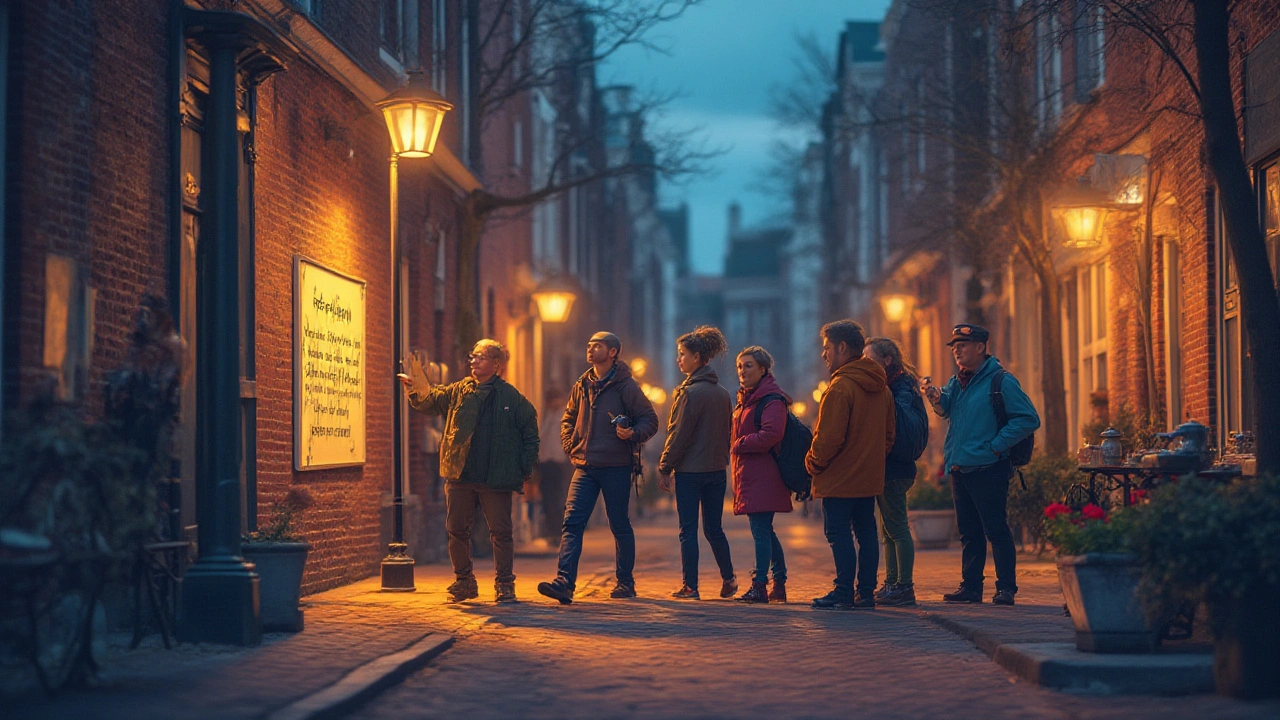
The Cultural Context: Why Amsterdam Does Things Differently
If you’re coming from a country where negotiation is a natural part of everyday business, Amsterdam’s Red Light District might surprise you—this is a place where rules are set, boundaries are respected, and professionalism trumps street smarts. The Dutch liberal tradition goes back centuries, blending individual freedom with tough regulations. That’s why sex work here has been out in the open since the 17th century, embraced by its own guilds, and featured in classic Dutch art inside places like the Rijksmuseum. These days, the city treats sex work like any other service: transparent pricing, clear communication, and no room for haggling games or tricks.
Even the way De Wallen is laid out—rows of brick buildings, neon-lit windows, and centuries-old canals—reflects Amsterdam’s historic approach to urban planning: compact, efficient, built for community. No secret backrooms, no dodgy alleys. If you want something extra, you ask straight up, and you take no for an answer. There’s even a Red Light District Museum (Red Light Secrets) that gives a behind-the-glass view of daily life for sex workers and traces the area’s cultural history.
So if you’re tempted to try haggling for a better deal, remember it’s not just about offending a worker—it’s about respecting a city where autonomy and clear boundaries have been part of the DNA for generations. Instead, take it as a challenge to blend in. Ask politely, pay the price listed, and savor the Amsterdam experience as locals do: with openness, curiosity, and a healthy dose of respect. You’ll leave with a better story, and you won’t risk losing out on the very thing that makes De Wallen so unique—its rare blend of freedom and mutual respect.

